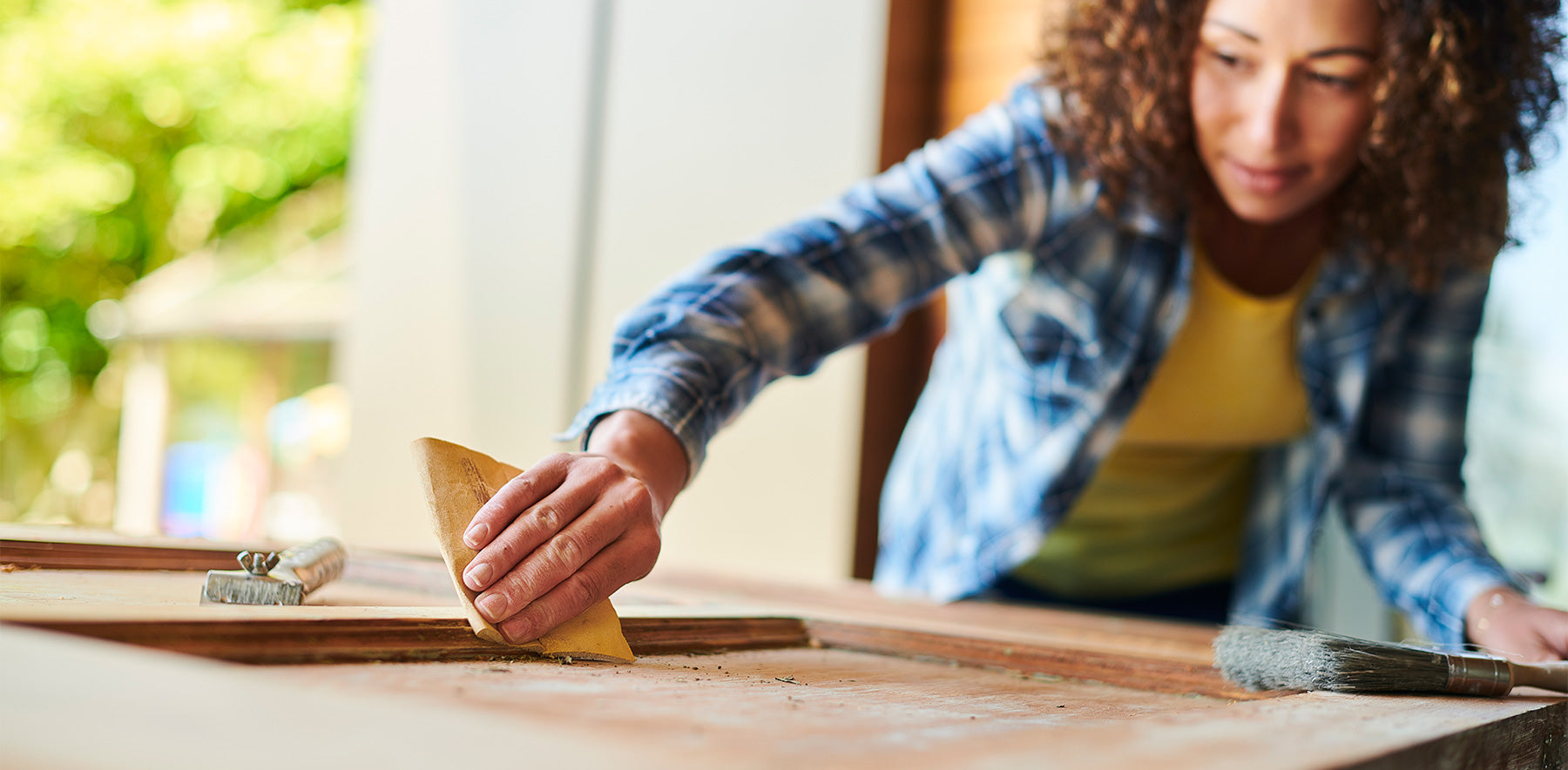
How to Strip a Door
Leader Online Help & Advice Centre
How to Strip a Door Guide:
If you prefer a rustic wooden door, but all the doors in your home are currently painted, there’s an easy way for you to get the look you want without having to replace all of the doors in your home.
You can easily strip your doors of the paint to achieve a natural wood look, and here at Leader Doors, we have tried and tested methods that we can share with you.
How to strip your door
There are many ways of stripping paint from your door. Our door experts have found a solution that you can use to restore the natural wood look of the doors in your home.
-
1. Patch Test the Paint Stripper Solution
Paint stripper can be used to strip the door of existing paint, and it is important to test the wood before you complete the full application. Add a small amount of the paint stripper solution to an area of the wooden door and assess the results. This will tell you how much of the solution you need to add to the door to be effective.
-
2. Apply the Paint Stripper
You can then add the paint stripper to the full door in an amount that you think is suitable. This will ensure that all layers of paint are lifted from the door (as doors can have many coats applied over the years) and will restore the natural wood look. Wear protective gloves to ensure that you don’t cause injury to your hands. It is also worth clearing the surroundings to ensure that the stripper doesn’t get on any other surfaces.
-
3. Leave the Paint to Dissolve
Cover the paint stripper with clingfilm and leave it to work its magic. The paste will eventually dissolve the paint to a water-soluble residue, which could take anywhere between 15 minutes to several days. It all depends on how thick the paint layers are on the door.
-
4. Clean up the Paint
If the softened paint peels away from the door when you remove the cling film, you know it’s ready. Dispose of the plastic and dissolved paint safely with gloves and a dust mask. If the property is older and you don’t know how long the paint has been on the door, be aware that it could contain old lead.
-
5. Check for Salt
Once the wood is completely dry, you may find crystalline salt on the door. Brush this off and rinse the surface again. This time, try neutralising the wood by sponging it down with a solution of white vinegar in water (1 part vinegar, 3 parts water).
-
6. Smooth & Nourish the Door
Use fine grade glass paper to smooth the door, making sure that you follow the grain of the wood. Finally, protect the wood by applying a finish of liquid beeswax. Once it has dried, buff with a cotton cloth and add wax polish for an extra shine. Still not satisfied with your wood doors? Take a look at our full collection of internal doors in both wood and paint to achieve your dream interior look.
FAQs
Is it best to sand or strip furniture?
It is often better to strip furniture as opposed to sanding it. Stripping furniture is a messy process, but it can be a faster process and be safer (if you aren’t a skilled sander). Sanding a piece of furniture cuts through patina and stain and can cause colour changes to the furniture piece.
Does vinegar remove paint from wood?
Vinegar doesn’t remove paint from wood, but it can help soften paint to make it easier to remove. Applying vinegar to wood is a non-toxic alternative, and although it will not completely strip paint from wood, it can help to soften the paint before removal.
How do you neutralize wood after stripping?
Paint stripping products are effective, but they can be harsh and harmful to your eyes, nose, throat and skin. One way to clean down a door after stripping is with a mix of vinegar and water in equal proportions. Wipe the door surface with the mixture as this will clean the door and counteract caustic elements found in paint removers.
Can baking soda remove paint from wood?
Baking soda will not remove paint from wood on its own. However, if you mix baking soda with white distilled vinegar, it will help to remove excess paint from furniture. This process will help to soften any existing paint after your initial strip and is an effective way of removing those final stubborn flecks.
How to remove paint from wood without chemicals
Many of us are conscious about the chemicals that we bring into our properties and we want to protect ourselves, our family and pets from any excess chemicals that could be irritating or harmful to our health.
Here at Leader Doors, we have compiled a list of ways that you can use as a non-toxic alternative to paint stripper.
Sanding: sanding the door (although not always the best option for the door) can reduce the intake of chemicals into your home. If you are not skilled in sanding, it is best to consult a professional before completing the project.
Baking soda / Vinegar: As previously mentioned, a combination of these two natural products can soften harsh flecks of paint, making them easier to remove.
Pressure washer: This is suited towards exterior projects such as decking and fences and will not remove all of the paint but will help with flaking bits of paint.
Scrapers: Paint scrapers are useful to help remove paint from hard to reach areas and when combined with other methods are effective at removing paint from wood.





